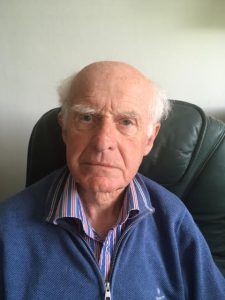
Martin Cowley, FCA, looks back at the challenges and opportunities of steering a major hospital through troubled waters.
Prior to taking up my post in the Mater I had worked for ten years in three different accountancy offices as a Chartered Accountant. I joined the Mater onNovember 19, 1973, at the age of 28. I served the hospital for the following 34 years.
My first job at the Mater was Financial Controller/Deputy Chief Executive for 19 years, followed by 13 years (1992-2005) as Chief Executive. I also played my part as a senior executive in the health care system. I was active in the Dublin Academic Teaching Hospitals’ CEO Forum, as well as being a member of number of national and regional bodies including the ERHA, the Northern Area Health Board, the HMI Board (of which I was President) and the Health Services National Partnership Forum. I remained on as a Director of the Mater Board after I retired in 2007 until 2013.
I really enjoyed my years in the Mater, even though there were pressures at times, particularly relating to patients on trolleys in A & E. While balancing budgets was important, I always tried to ensure that the patient’s journey through our hospital adhered to the highest quality standards.
I would now like to recount my main memories of the Mater over the 33 years I worked there.
When I joined the Mater the physical landscape of the hospital was completely different to what it is today. We took over the Dominican Convent and other buildings which were then located on Eccles Street to develop the hospital. The hospital at that stage had 456 beds, all nightingale wards- the present ward block was not commissioned until the late 1980s. When I started each ward sister was a religious sister (with one exception). The Hospital Development Programme commenced in 1978, when Mr Charles Haughey turned the sod for the temporary X-ray Department. It took over 30 years to compete the development programme.
There were two major incidents of national significance where the Mater played a major role which stand out in my memory. They are the Talbot Street bombings in 1974 and the Stardust fire in 1981.
There were some great characters at the Mater during my early years. However, two I consider to be worthy of mention here – Bertie Ahern, the 1st Assistant Accountant, who was a great support to me at the time and was an excellent negotiator even then. I still have a picture of Bertie walking round the hospital talking to the Department heads telling them how much they were spending! The other was the late Dr Bryan Alton who really stood out in terms of his impact on the hospital, his national profile at the time and his magnetic presence.
Unfortunately, during the mid- 1980s there were significant cuts in the service, the effects of which we are experiencing to this day.
My years at the helm as CEO were a time of huge challenges for the health services particularly in the eighties and nineties, where financial rectitude was the order of the day. I steered us through these troubled waters by trying to maintain the very difficult balance between fiscal rectitude and service delivery. Despite the cutbacks and financial constraints, together with my colleagues and the staff in general, we successfully implemented many developments during my tenure:
These major developments included:
- National Spinal Injuries Service.
- National Heart / Lung Transplant Program
- Regional Breast Surgery Unit
- ICU, HDU and cardiac surgery ward expansion
- Pulmonary and bronchoscopy suite
- Vascular laboratory
- Catherine McAuley Education Centre
- Alton Research Laboratories
- Infectious disease ward
- PET Scanner
- Medical Emergency Division (referred to as the MED)
- Dedicated elderly service
- Stroke service
- MRI scanner
- Nephrology and dialysis service
- UCD Mater Clinical Research Centre
- Quality improvement programmes and accreditation
- Focus on the patient via the Patient Services Department
- Mission Effectiveness Programme
- Corporate Governance Structure (including medical directorates)
- Association with Temple Street Children’s University Hospital
- Pulmonary Hypertension Unit
- Pre-assessment Unit
- Progressing Partnership,
- Migration to the nursing degree
- Progressive Information Management programme (at the time)
Most, if not all, of these were not my initiatives but I facilitated them happening. Of course, all the above are now commonplace in Irish hospitals, but they were not at the time.
Since I retired, the new wing of the Mater became fully operational. It is a truly stunning development! I would like to mention Laura Maghey ,Project Manage.r and the four Chief Executives who followed me for getting the development finally over the line.
On Reflection…
What makes the Mater such a great hospital? The answer lies in the people who work there and the breadth of services it provided and continues to provide regionally, nationally and locally. My abiding memory of the hospital is the friendliness and professionalism of the staff. A high level of service follows on naturally from such attributes. There always was a ‘can do’ attitude and the unique ethos of the Sisters of Mercy was very important in setting the agenda for the hospital going forward.
I would like to pick out two people- Gearoid MacGabhann (Chief Executive when I was Financial Controller,) for all the help and tutoring he provided me over my earlier years and the Late Sr Margherita Rock with whom I worked in partnership, when she was Executive Chairperson. She gave me great guidance and encouragement during my latter years at the Mater.
Martin Cowley FCA

